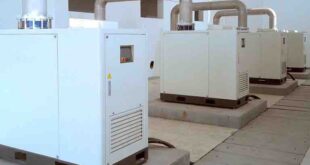To cope with the global demand for high bandwidth and high-speed connectivity, 5G will continue to be the main point of development for radio communications technology. However, for 5G roll out to be successful manufacturers need to use materials for antenna radomes that combine mechanical performance, radio transparency, and sustainability. Here Juha Pesonen explores some of the possibilities with composites for 5G
To protect antenna systems from damage in harsh conditions like rain and snow, radomes play an important role. Composites have been used in radomes for previous generations for some time, allowing manufacturers to strike a balance between mechanical strength and signal permittivity.
However, 5G typically operates at much higher frequencies than 4G, including low-band 5G above 3GHz, mid-band frequencies in the sub-6GHz range and mmWave frequencies in the 24GHz range and above. As the bandwidth rises, it becomes more challenging for radome manufacturers to design radomes that are radio transparent while withstanding the wide-ranging weather conditions.
Fiberglass and transparency
The need for better radio transparency will set new requirements for radomes and the composite materials used in their designs. Materials with fiberglass have been successful in cell towers up to 4G LTE, but the same composite construction will not be perform the same with the higher 5G frequency systems.
To strike a balance between radio transparency and mechanical strength, Exel Composites developed both a composite and manufacturing process which resulted in the creation of radomes with better signal permittivity and stiffer structural integrity. One improvement involved integrating a thermoplastic foam sandwiched between composite surface layers. This middle layer has a much lower dielectric constant than the surface layers, making the solution more radio transparent compared to older models. It’s also possible to incorporate other dielectric materials, like honeycomb and cork, into thin fiberglass walls of the parts of the radome optimized for antenna design.
Radomes, composites, and recyclability
As older generations of antennas are replaced, what do you do with the composite radomes at their end of life? While there is no straight answer, were there is a desire to recycle and minimise carbon footprints, it is possible to do something with the end-of-life composites.
One method is by pyrolysis, which breaks fiberglass down into three recyclable structures: pyro-gas, pyro-oil, and a solid byproduct. Other methods involving the crushing and mixing of composites into fuel for cement kilns are also popular. While these methods aren’t as widespread as they could be — resulting in companies having to ship their waste over large distances for it to be recycled. Exel Composites is working with several industry associations, like the European Composites Industry Association, to investigate recyclability.
Exel has also aligned its sustainability goals with the relevant UN Sustainable Development Goals, to help provide a sustainable framework to measure and report against. Working with industry associations and customers, Exel looks at its own supply chain and manufacturing as part of these goals.
Striking a balance between having a 5G infrastructure that is mechanically durable, radio transparent and sustainable isn’t an easy task. However, as the technology for manufacturing composites continues to rapidly evolve, a solution combining all three of these factors may just be around the corner.
Juha Pesonen is segment owner for telecommunications at global composite expert Exel Composites.
 Engineer News Network The ultimate online news and information resource for today’s engineer
Engineer News Network The ultimate online news and information resource for today’s engineer



